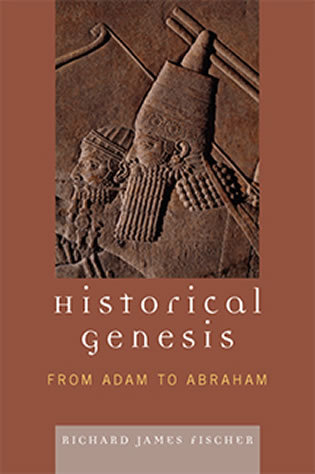In ancient Egypt about 2400 BC, a thousand years before Moses, two pyramids were carved by Semite stonecutters. The Egyptians, they decided, could appreciate a little Semitic history. A creation event is described “out of the waters of chaos.” The man “created” is called “Atum.” And he “begot” a number of sons. One of them listed is named “Seth,” the same name as Adam’s third son.
The Bible accounts for one man only created by God. Only one person in the Bible has a son named “Seth.” That man is Adam of Genesis. Thanks to these historical fragments carved in Egypt, the creation of a man called “Atum,” Adam himself in all likelihood, was documented long before one word of our Christian Bible had been written.
Cuneiform inscribed clay tablets discovered from excavations near the Tigris and Euphrates rivers have given archaeologists a picture of a region totally unknown two centuries ago. These inscriptions have provided valuable insights into the history, religion, culture, and even the racial characteristics of the people who lived there. And some of these writings appear to pertain to Adam himself.
Adam appears to be a historical personality who lived roughly 6,800 years ago and began the line of promise leading to the Savior.
The legend of Adapa who lived in Eridu, the first city built in southern Mesopotamia, resonates with passages in Scripture pertaining to Adam. Adapa is even called “son of Ea (god)” which parallels Luke naming Adam “son of God.”
Could it be only coincidence that Adam was told "by the sweat of his face" he would eat "bread," and Adapa was a baker by trade; or that Adapa was deprived of eternal life by not eating or drinking the "food or water of life," while Adam was cut off from eating the fruit of the "tree of life"?
Regarded as a prophet or seer, Adapa had been priest of the temple at Eridu. He is described as "blameless," "clean of hands," "anointer and observer of laws." Could that also describe Adam, the first type of Christ? Also, Adam was taken from the ground; in the Hebrew: 'adam from 'adamah. How close phonetically is 'adamah to Adapa?
The Genesis flood terminated the Adamic race except for Noah and his family, decimated the nearby Sumerians, but spared the Egyptians to the south and everyone else living more distant. It has been construed as a global catastrophe by creationists, however, obliterating the entire human race. This has been a little mistake in understanding with big consequences as a result.
Since the Sumerians listed pre-flood kings and flourished after the flood, and the Bible in Genesis 6:4 mentions a pre-flood population of “Nephilim” (translated “giants” in the KJV) and refers to their descendants, the sons of Anak in Numbers 13:33, we could have figured out that flood survivors are mandated both historically and biblically. But we didn’t.
We should have discovered long ago that Genesis does not describe a global flood. Due to typical Hebrew-speak that uses "all" and "every" the way we would say much, many or some, and the unfortunate mistranslation of Hebrew words that have double meanings such as land and earth, and hills and mountains, we got it into our heads that the biblical flood caused universal destruction. An “olive leaf” (Gen. 8:11) would not have been available for picking had it been submerged for a year under seawater. What were we thinking?
The heyday of the ziggurats in Mesopotamia began after the flood as a means of surviving future floods. Ziggurat building lasted about a thousand years and ended when Sumer was destroyed around the time of Abraham. The Semite builders at Babylon got caught up in a building contest with the Sumerians that ended in confusion. Then adding to the confusion, we thought that all human languages began at Babel.
In short, Christian apologetics is fowled up from the beginning of Genesis through the eleventh chapter. The creation versus evolution debacle has been based primarily on this flawed interpretation. As the argument goes, if the entire human race descended from a pair of specially created individuals, how could mankind have evolved?
And the answer is that Genesis is silent on the beginning of mankind in general, although adamant about the beginning of God’s chosen race. The pair of created individuals, Adam and Eve, described in Genesis lived less than 7,000 years ago. Human beings have been around for many tens of thousands of years, and our bipedal ancestors commenced millions of years ago.
You would think that Christians would have found this huge flaw in apologetics by now. That it has escaped detection thus far simply highlights our persistent state of theological ignorance in an age of scientific enlightenment.
Stripped of its historical setting, Genesis 2-11 may be thought of as a true account of the beginning of mankind that is totally out of step with scientific understanding requiring turning science on its head for reconciliation, or it may be considered merely a poignant piece of literary fiction.
In its historical context, however, Genesis can be appreciated not as the history of the beginning of the Homo sapiens species, but as the history of the Adamites and Semites culminating in the Israelites and Jews in later chapters of the Old Testament, pointing us toward the New Testament - to Jesus the Messiah.

